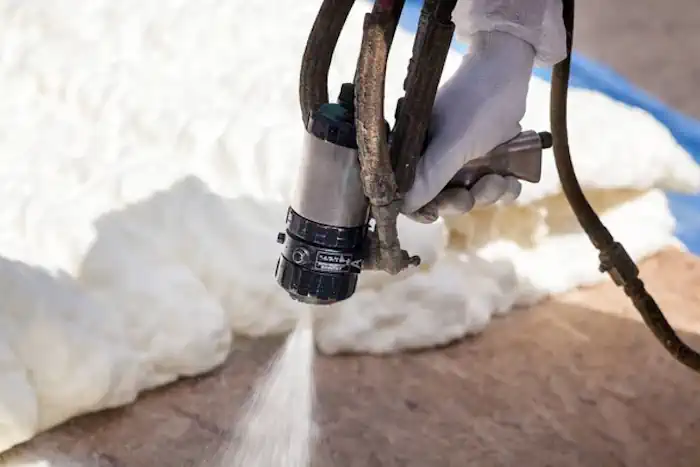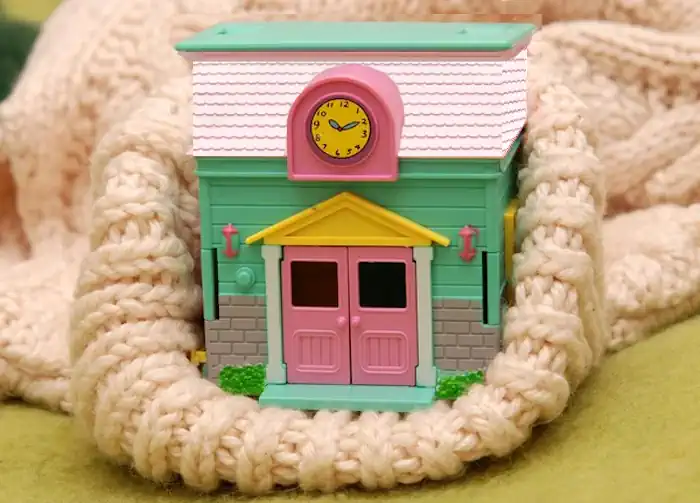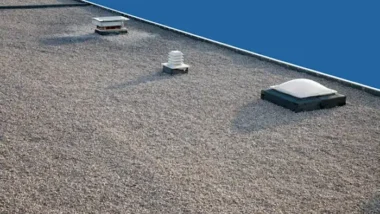Did you know that up to 25% of heat can be lost through an uninsulated roof? This means that if you have a flat roof that is not properly insulated, you could be losing a significant amount of heat and money on your energy bills.

Improving the insulation of your flat roof can not only help you save money on your energy bills but also make your home more comfortable.
Assessing the current insulation setup on your flat roof is the first step towards improving its thermal performance.
Adding insulation layers, exploring different insulation materials, and addressing air leakage are some of the techniques that can enhance the efficiency of your flat roof insulation.
While these may sound daunting, seeking expert advice can help you optimize your flat roof insulation and make the most out of your investment.
In this article, we will explore some of the best ways to improve the insulation of your flat roof and help you make informed decisions about your home’s energy efficiency.
Key Takeaways
- Assess current insulation to determine areas for improvement
- Consider adding insulation layers and exploring different materials
- Address air leakage through sealing gaps and voids with techniques such as caulking and weather stripping
- Consult with a professional for expert recommendations on insulation materials and installation techniques based on local climate and cost considerations.
Assessing Current Insulation: Understanding the Existing Insulation Setup on Your Flat Roof
You’re probably wondering, “How can I assess the current insulation on my flat roof?” Well, let’s take a closer look at the existing setup and see how we can improve it.
First, you need to assess the effectiveness of the current insulation. This can be done by checking if there are any hot or cold spots on your ceiling or walls. If you notice any, it could be an indication that the insulation isn’t doing its job properly.
Next, you should identify any gaps in the insulation. These can occur due to poor installation or even natural wear and tear. If you find any gaps, it’s important to seal them immediately to prevent heat loss.
Lastly, you should look into improving the R value of your insulation. The R-value of insulation refers to its thermal resistance. It measures how effectively the insulation material resists the flow of heat – trapping it in during the colder months, and blocking it out during the hotter months. The higher the R-value, the better the insulation’s ability to prevent heat transfer.
In practical terms, a higher R-value indicates that the insulation can provide better thermal protection. It means that less heat will pass through the insulation, resulting in increased energy efficiency and reduced heating or cooling costs.
By increasing the R value, you can significantly improve the insulation of your flat roof and reduce your energy bills.
Adding Insulation Layers: Exploring Techniques for Enhancing Thermal Performance of Your Flat Roof
By adding additional layers to your roofing system, you can enhance its thermal performance and reduce energy costs. There are several installation methods you can consider, including:
- Adding insulation boards: These boards can be placed directly on top of the existing roofing system to provide a layer of insulation. They’re easy to install and can be cut to fit any size or shape roof.
- Using spray foam insulation: This type of insulation is applied to the underside of the roof deck and fills in any gaps or cracks. It provides excellent thermal performance and can help reduce air leakage.
- Installing a green roof: A green roof is a living system that includes layers of vegetation and soil. It provides excellent insulation and can help reduce the heat island effect in urban areas.
- Considering eco-friendly options: If you’re concerned about the environmental impact of your roofing system, there are several eco-friendly options available. For example, you can use recycled insulation materials, or opt for a reflective roof coating that helps reduce heat absorption.
When considering adding insulation layers to your flat roof, it’s important to keep cost considerations in mind. While some installation methods may be more expensive than others, they can also provide significant energy savings in the long run. Eco-friendly options may have higher upfront costs, but can help reduce your carbon footprint and contribute to a more sustainable future.
Insulation Materials: Comparing Options for Efficient and Effective Flat Roof Insulation
Let’s compare different materials for efficient and effective insulation of flat roofs. Two common options are spray foam and fiberglass.

Spray foam is a popular choice because it creates an air-tight seal that helps to prevent heat loss. It is also known for its ability to fill gaps and cracks, reducing the risk of air leakage. This type of insulation is typically more expensive than fiberglass, but it can offer greater energy savings in the long run.
Fiberglass, on the other hand, is a cost-effective option that is widely available. It is made from recycled glass and is easy to install. While it may not provide the same level of air-tightness as spray foam, it can still offer good thermal performance. It is also a more environmentally friendly option than some other insulation materials. When comparing spray foam vs. fiberglass, it’s important to consider your budget, energy savings goals, and environmental impact.
Spray foam and fiberglass are just two possible materials that can be used to insulate a flat roof. Here’s a table outlining the pros and cons of several types of insulation used on flat roofs:
| Insulation Material | Description | Pros | Cons |
|---|---|---|---|
| Rigid Foam Insulation | Made from materials like expanded polystyrene (EPS), extruded polystyrene (XPS), or polyisocyanurate (ISO). | Lightweight and durable. | Higher initial cost compared to other types. |
| Spray Foam Insulation | Applied as a liquid that expands and solidifies, creating a seamless insulation layer. |
|
|
| Fiberglass Insulation | Consists of tiny glass fibers that trap air, slowing down heat transfer. Available in batts or rolls. |
|
|
| Mineral Wool Insulation | Made from rock or slag fibers. Offers good thermal and acoustic performance. Available in batts or rigid boards. |
|
|
| Polyurethane Insulation | A type of spray foam insulation providing superior thermal resistance and air sealing. |
|
|
When choosing an insulation material, it’s important to weigh the pros and cons of each option. Cost is often a major factor, but it’s also important to consider the long-term energy savings and environmental impact.
Addressing Air Leakage: Sealing and Insulating Gaps and Voids to Prevent Heat Loss for Flat Roofs
As you sit in your home, feeling a slight draft, have you considered how sealing and insulating gaps and voids on your roof could prevent heat loss and save you money on energy bills? One of the most effective ways to improve the insulation of your flat roof is by addressing air leakage.
Sealing and insulating gaps and voids can go a long way in preventing heat loss and improving the overall energy efficiency of your home. To effectively seal and insulate your flat roof, you can use various sealing techniques such as caulking, weather-stripping, and foam sealant.
Thermal imaging can be a useful tool to identify areas with air leakage and pinpoint gaps and voids that need to be sealed. DIY options are available for those who prefer to take on the project themselves, but it’s important to note that professional installation may be necessary for larger gaps and voids.

Image Source: PixelThermographics.co.uk
By taking these steps to address air leakage, you can significantly improve the insulation of your flat roof and enjoy a more comfortable and energy-efficient home.
- Caulking
- Weather-stripping
- Foam sealant
- Thermal imaging
- Professional installation
Professional Consultation: Seeking Expert Advice for Optimizing Flat Roof Insulation
Consider consulting with a professional to gain expert recommendations on how to optimize the energy efficiency of your home’s flat roof. A professional can assess the current state of your roof’s insulation and identify areas where improvements can be made. They can also provide cost estimates for the necessary upgrades and advise on the energy savings potential of each option.
Expert consultation can help you avoid costly mistakes and ensure that your flat roof insulation is properly installed and optimized for maximum energy efficiency. By factoring in the unique characteristics of your home and the local climate, a professional can recommend the right insulation materials and installation techniques to maximize the thermal performance of your flat roof.
In the long run, their advice can save you money on energy bills and contribute to a more comfortable living environment.
Frequently Asked Questions
What is the cost of insulating a flat roof?
The cost of insulating a flat roof can vary depending on various factors such as the size of the roof, the type of insulation material used, the complexity of the installation, and the region’s labor and material costs. However, to provide a rough estimate, the cost of insulating a flat roof typically ranges from $1.00 to $8 per square foot.
This estimate only includes the cost of insulation materials and installation. Additional costs may be involved if any preparatory work, such as removing existing roofing materials or repairing the roof substrate, is required.
To obtain a more accurate cost estimate, consult with roofing contractors or insulation specialists in your area, who can assess your specific project requirements and provide detailed quotes based on your location and desired insulation materials.
Can I install insulation on top of my existing flat roof?
It is possible to install insulation on top of an existing flat roof, but it may have some drawbacks. Alternative insulation methods should be considered, as the added weight could impact roof maintenance. Pros and cons should be weighed carefully.
How long does it take to complete a flat roof insulation project?
The duration of a flat roof insulation project varies, depending on the type of material used, the size of the roof, and the weather conditions. However, the benefits of flat roof insulation are significant, including improved energy efficiency, reduced noise pollution, and increased comfort. Choosing the right insulation material and ensuring proper installation are crucial factors in achieving optimal performance.
What is the best insulation material for a flat roof in a hot climate?
To achieve energy efficiency and sustainability in your flat roof, use a durable insulation material that can resist high temperatures. Consider using a reflective coating to reduce heat absorption and maintain cooler indoor temperatures.
How often should I inspect my flat roof insulation for damage or wear?
Roofing professionals recommend conducting a DIY inspection of your flat roof insulation annually or after severe weather conditions. Common issues to look for include water damage, mold, and sagging areas. Prompt repairs can prevent costly damage.
Finally…
Congratulations on taking the necessary steps to improve the insulation of your flat roof! You’re on the right track to maximizing energy efficiency and reducing utility costs by assessing your current insulation and exploring techniques for enhancing thermal performance.
Adding insulation layers and selecting the right insulation materials are crucial steps in achieving optimal flat roof insulation. But don’t forget to address air leakage by sealing and insulating gaps and voids. Even the smallest gaps can contribute to significant heat loss and compromise the effectiveness of your insulation.

While you may feel confident in your ability to improve the insulation of your flat roof, it’s always a good idea to seek professional consultation. A roofing expert can provide valuable advice and help you optimize your insulation to ensure maximum performance and longevity. So don’t hesitate to seek out the expertise of a professional.
With careful consideration and attention to detail, you can achieve a well-insulated flat roof that promotes energy efficiency and comfort.
